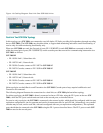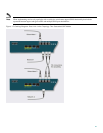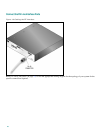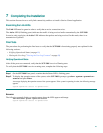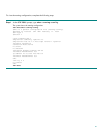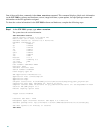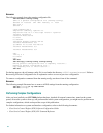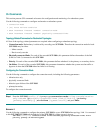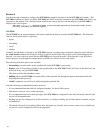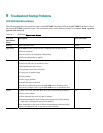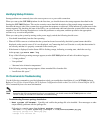54
EXAMPLE:
The following example shows the running configuration file.
SCE 2000#show running-config
#This is a general configuration file (running-config).
#Created on 15:50:56 CET MON February 11 2002
#cli-type 1
#version 1
clock timezone CET 1
snmp-server community “public” ro
snmp-server host 10.1.1.253 traps version 1 “public”
interface LineCard 0
connection-mode active
no silent
no shutdown
flow-aging default-timeout UDP 60
interface FastEthernet 0/0
ip address 10.1.5.109 255.255.0.0
interface FastEthernet 0/1
interface FastEthernet 0/2
exit
line vty 0 4
no timeout
exit
SCE 2000#
SCE 2000#copy running-config startup-config
Writing general configuration file to temporary location...
Backing-up general configuration file...
Copy temporary file to final location...
SCE 2000#
For backup purposes, the old startup-config file is saved under the directory: tffs0:system/prevconf. Refer to
Recovering a Previous Configuration for an explanation on how to recover previous configuration.
To remove a configuration command from the running-config, use the no form of the command.
E
XAMPLE:
The following example illustrates how to remove all DNS settings from the running configuration.
SCE 2000(config)#no ip name-server
SCE 2000(config)#
Performing Complex Configurations
After you have installed your SCE 2000 platform hardware, checked all external connections, turned on the system
power, allowed the system to boot up, and performed the initial system configuration, you might need to perform more
complex configurations, which are beyond the scope of this publication.
For further information on system and interface configuration, refer to the following documents:
• Cisco Service Control Engine (SCE) Software Configuration Guide
• Cisco Service Control Engine (SCE) CLI Command Reference



